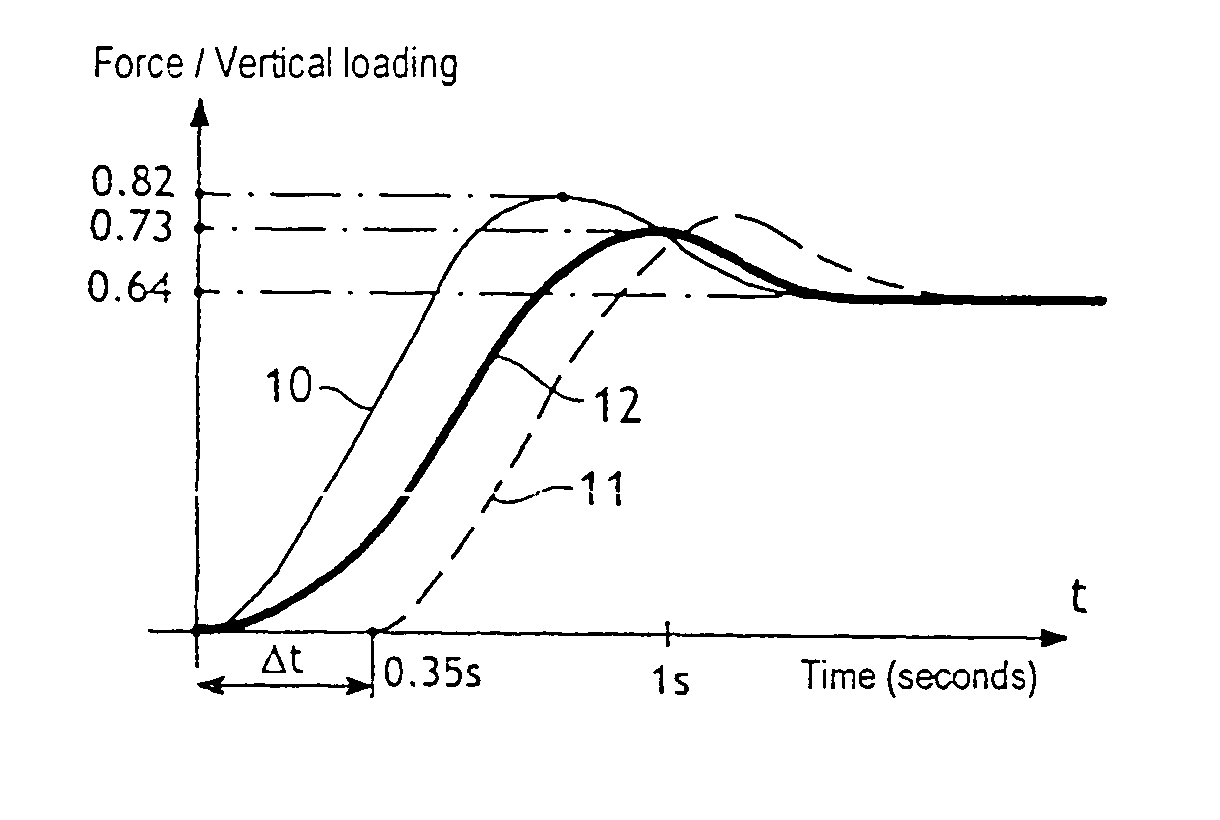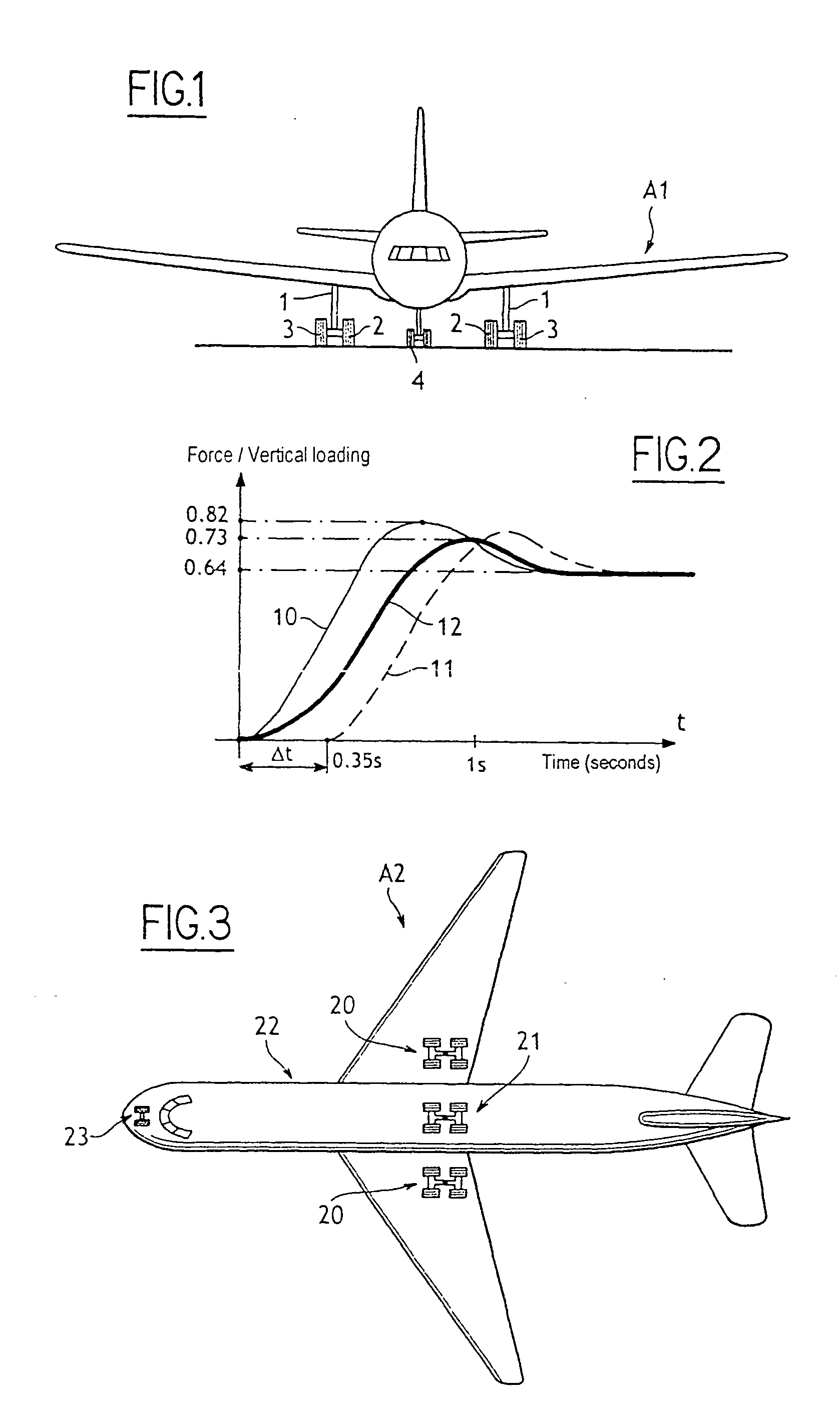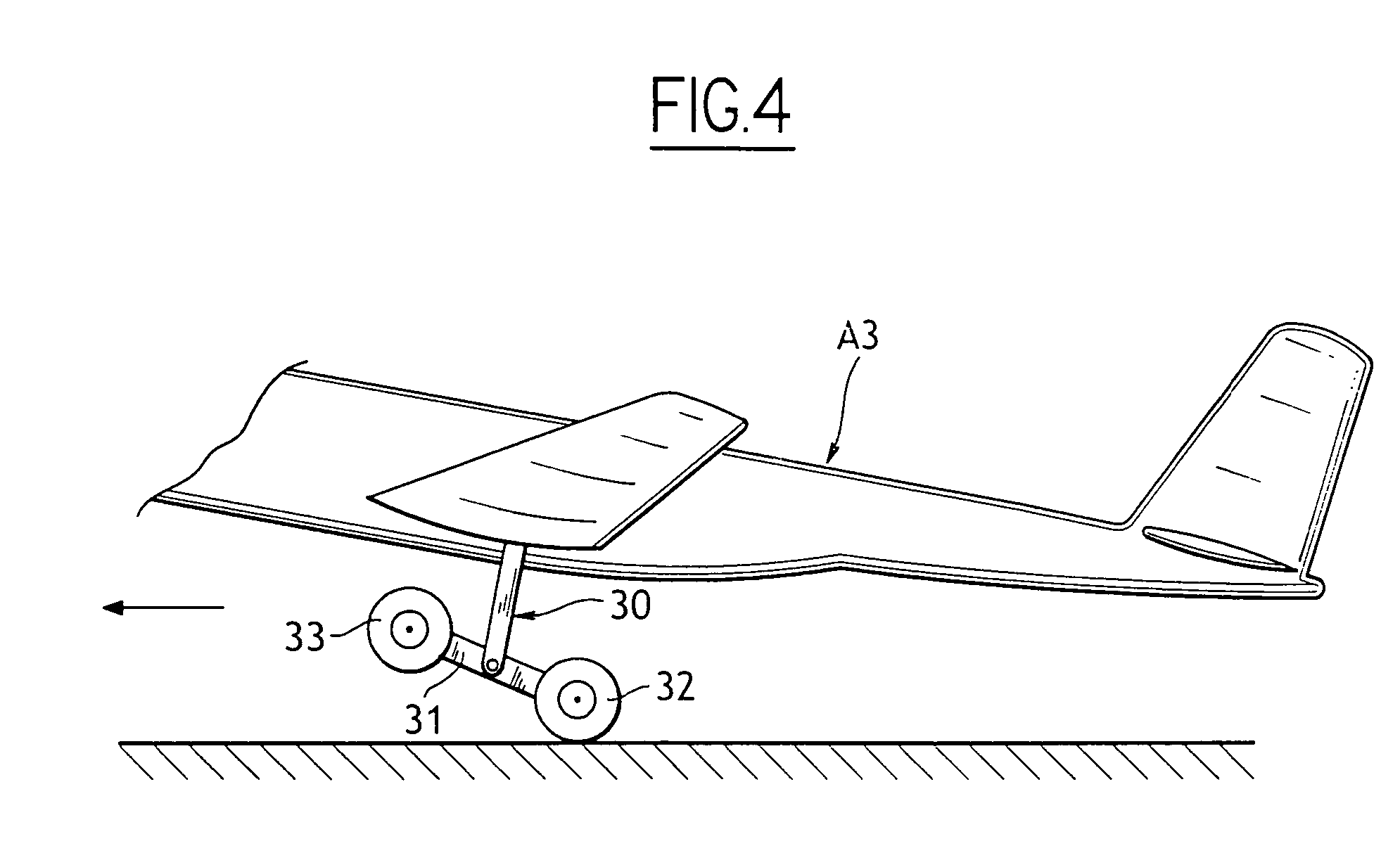Method of braking an airplane having a plurality of braked wheels
a technology of brakes and airplanes, applied in the direction of braking systems, automatic braking sequences, aircraft braking arrangements, etc., can solve the problems of considerable limit on the performance of brakes, difficulty in implementation, and limitation that must be lowered even further, so as to reduce the maximum braking force
- Summary
- Abstract
- Description
- Claims
- Application Information
AI Technical Summary
Benefits of technology
Problems solved by technology
Method used
Image
Examples
Embodiment Construction
[0025] With reference to FIG. 1, the method of the invention is applied to an airplane A1 (e.g. of the Airbus A320 or Boeing 737 type) having two main undercarriages 1 each carrying an inner braked wheel 2 and an outer braked wheel 3 in a diabolo configuration.
[0026] The airplane is also fitted with an auxiliary undercarriage 4 fitted with wheels that are not braked.
[0027] During braking on landing, the method of the invention consists in applying the brakes in a first group of braked wheels, specifically the group constituted by the inner wheel 2 of the two main undercarriages 1, and then after a time offset, in applying the brakes to a second group of braked wheels, specifically the group constituted by the outer wheel 3 of the two main undercarriages 1.
[0028] The braking as performed in this way remains symmetrical, and therefore does not deflect the path followed by the airplane.
[0029] It should be observed that runways are generally cambered, sloping down from the axis of t...
PUM
 Login to View More
Login to View More Abstract
Description
Claims
Application Information
 Login to View More
Login to View More - R&D
- Intellectual Property
- Life Sciences
- Materials
- Tech Scout
- Unparalleled Data Quality
- Higher Quality Content
- 60% Fewer Hallucinations
Browse by: Latest US Patents, China's latest patents, Technical Efficacy Thesaurus, Application Domain, Technology Topic, Popular Technical Reports.
© 2025 PatSnap. All rights reserved.Legal|Privacy policy|Modern Slavery Act Transparency Statement|Sitemap|About US| Contact US: help@patsnap.com



